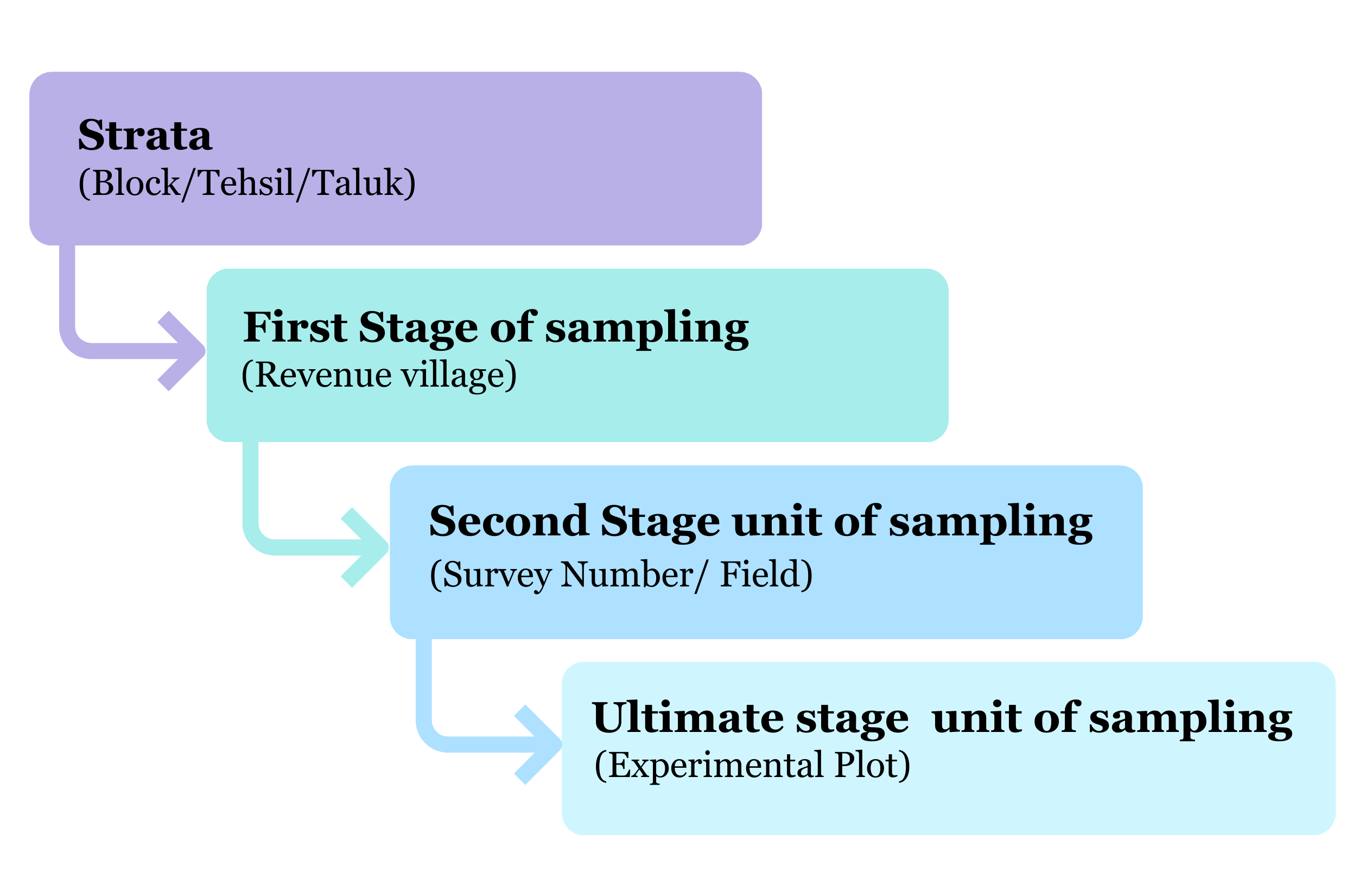2 Statistics on agriculture
The agricultural sector accounts for approximately 18% of India’s GDP and employs nearly half of its workforce. Reliable and timely information is vital for planners and policymakers to develop effective agricultural policies and make informed decisions on procurement, storage, public distribution, imports, exports, and other related matters. As such, the collection and management of agricultural statistics hold significant importance.
This chapter provides an overview of the system for collecting agricultural statistics in India. While agriculture is a state subject, agricultural statistics fall under the concurrent list, resulting in a decentralised system. State Governments, through their State Agricultural Statistics Authorities (SASAs), play a central role in collecting and compiling agricultural statistics at the state level. At the national level, the Directorate of Economics and Statistics, under the Ministry of Agriculture and Farmers Welfare, is responsible for compiling the data. Other key agencies involved include the National Statistical Office (NSO) and the State Directorates of Economics and Statistics (DESs).
2.1 Compiling crop statistics
Crop statistics comprise two key components: the area sown and the average yield.
While area estimates are derived from land revenue systems, yield estimates are obtained through crop estimation surveys.
2.1.1 Area statistics
The system for collecting area statistics across states and Union Territories (UTs) in India can be broadly classified into three categories:
States with complete enumeration systems
These include states with land records or temporary settlement systems, covering 86% of the states (18 states and 3 UTs).States using sample surveys
These are states with no land record system or permanently settled states, representing 9% of the states.States with no developed system for area statistics
In these states, the collection is still based on conventional methods such as personal assessment, accounting for 5% of the states.
2.1.2 Crop yield estimation
Crop yields are estimated through Crop Cutting Experiments (CCE), which are conducted extensively across the country. The General Crop Estimation Survey (GCES) covers 65 crops, including 51 food crops and 14 non-food crops. Approximately 9 lakh CCEs are carried out annually in India to estimate the yield of key crops such as rice, maize, bajra, groundnut, and sugarcane. These experiments are conducted systematically to ensure accurate and reliable yield data for principal crops.

Final estimates of crop production are calculated using area figures obtained through complete enumeration and yield rates derived from crop-cutting experiments. These estimates become available only after the harvest. However, to support timely decision-making, the Government requires advance production estimates.
The Directorate of Economics and Statistics (DES), under the Ministry of Agriculture and Farmers Welfare, provides advance estimates of crop area and production for key food and non-food crops such as food grains, oilseeds, sugarcane, and fibres. These estimates are issued in four stages:
- First forecast: Mid-September
- Second forecast: January
- Third forecast: Late March
- Fourth forecast: Late May
In addition to these forecasts, Final Estimates of crop area and production are published in December. Subsequently, Fully Revised Estimates for all-India crop statistics are released in December of the following crop year.
Additionally, information on the structure and characteristics of the agricultural sector is gathered through the Agricultural Census.
2.2 Agricultural census
The Agricultural census is a comprehensive exercise conducted to gather and analyze data on the structure of the agricultural sector in India. It provides essential information about operational holdings, including their number, area, land use, cropping patterns, and input usage, down to the lowest geographical levels such as villages, tehsils (sub-districts), and districts. This census serves as a statistical framework for planning and conducting future agricultural surveys.
Initiated in 1970-71, the Agricultural census is conducted every five years by the Department of Agriculture and Farmers Welfare in collaboration with State and Union Territory administrations. In states with land records, the number and area of operational holdings are collected through complete enumeration, while detailed data on the characteristics of operational holdings are gathered on a sample basis.
To date, eleven Agricultural censuses have been conducted, covering the reference years 1970-71, 1976-77, 1980-81, 1985-86, 1990-91, 1995-96, 2000-01, 2005-06, 2010-11, 2015-16 and 2020-21. The reference period for each census corresponds to the agricultural year, spanning from July to June.
The data derived from the Agricultural census plays a crucial role in policy formulation, resource allocation, and the overall development of the agricultural sector in India.
Additional data pertaining to various sectors can be obtained from the sources listed in the Appendix 1
“Mahalanobis and statistical planning in India”
In post-independence India, statistician Prasanta Chandra Mahalanobis played a key role in shaping the country’s economic planning. He developed statistical methods to guide the allocation of resources in India’s Five-Year Plans. Mahalanobis introduced the Mahalanobis Distance, a method for analyzing multi-dimensional data, and created the Input-Output Model to understand how different sectors of the economy interacted. His work, especially in the first Five-Year Plan (1951-1956), helped optimize resource use and industrial growth. Mahalanobis’ contributions laid the foundation for using statistics in economic policy-making, which continues to guide India’s development. He is known as the ‘Father of Indian statistics’.
“Statistics is the art of never having to say you’re certain.” – W. Edwards Deming
